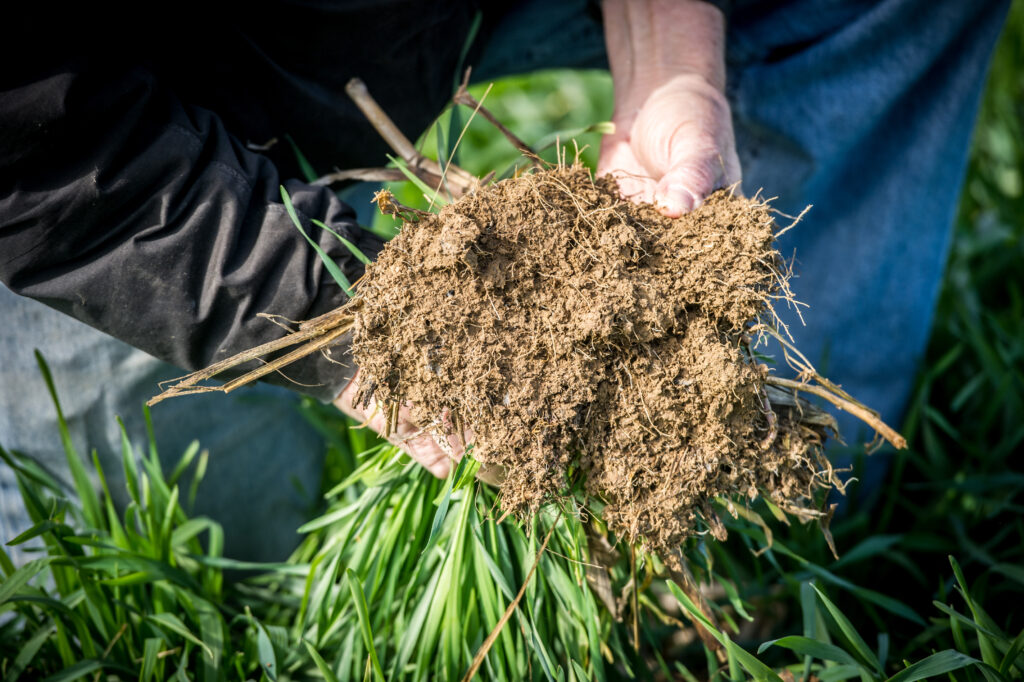Boosting Soil Carbon
Today, it’s getting more common to hear farmers refer to themselves as “carbon farmers” or to say they want to restore the soil carbon on their farm. This trend is being supported by an increasingly wide array of public and private sector payments to use farming practices that put more carbon in the soil (a process called sequestering carbon). There are a significant number of practices that can boost soil carbon on farms. A partial list includes:
- Use of cover crops and reduced soil disturbance, such as no-till or strip-till
- Incorporation of livestock manure in various forms, including composted manure
- Use of deep-rooted perennial grasses or woody plants that root deeply
- Growing high biomass crops with extensive root systems
- Grazing pastures and cover crops, particularly with management intensive or rotational grazing
- Developing healthier soils with more active microbial communities
Many of our agricultural soils in the U.S. have far less soil organic matter and soil carbon than at the time they were first tilled, often as little as half of the original levels. With so many programs now paying farmers to use practices contributing to soil carbon, there is opportunity for farmers to use this as part of their long-term strategy to develop a profitable and resilient farm for the future. Building soil carbon is also another good way to leave the land in better shape for the next generation.

